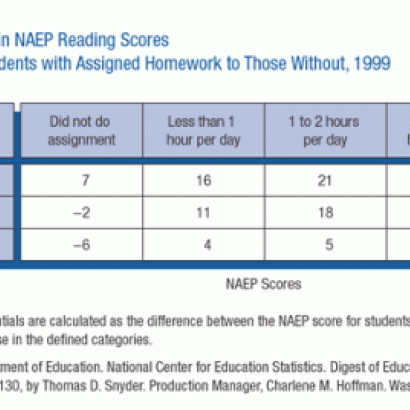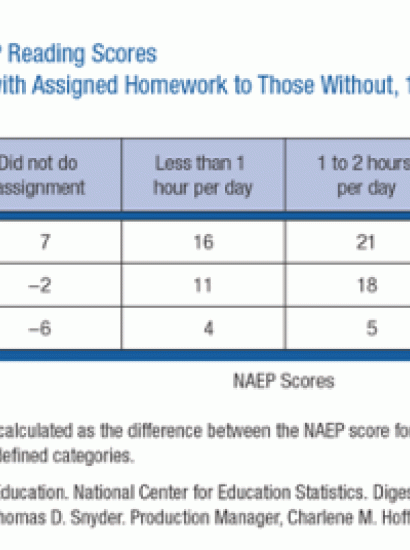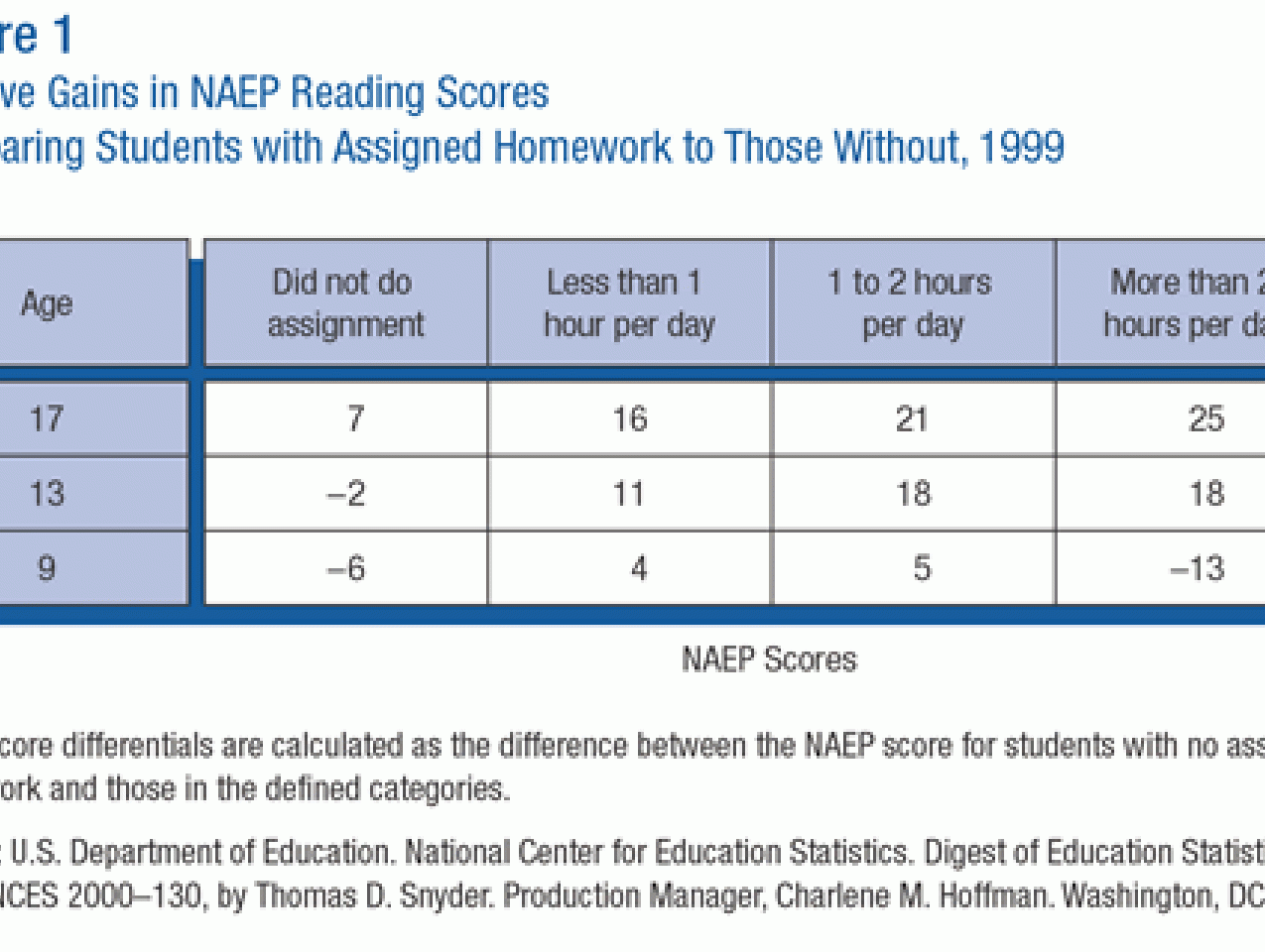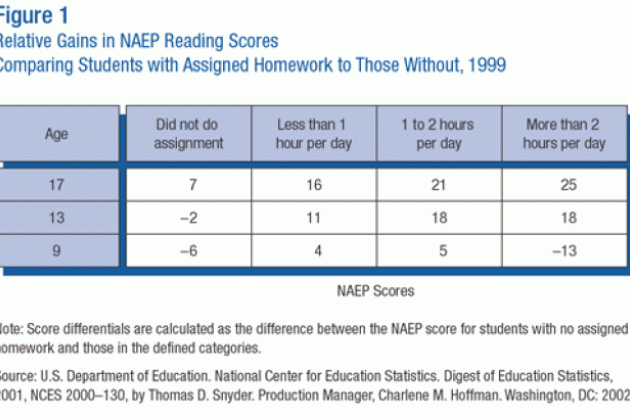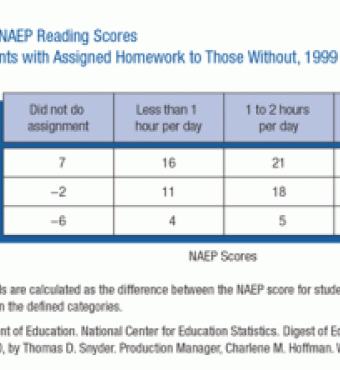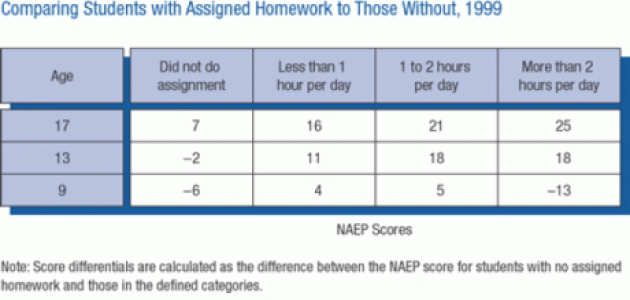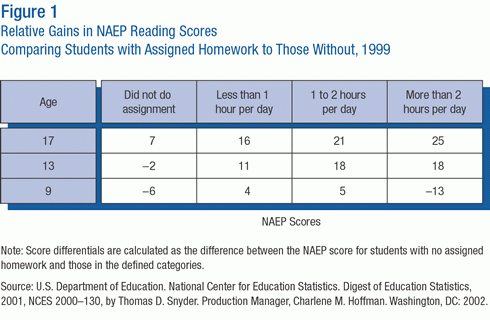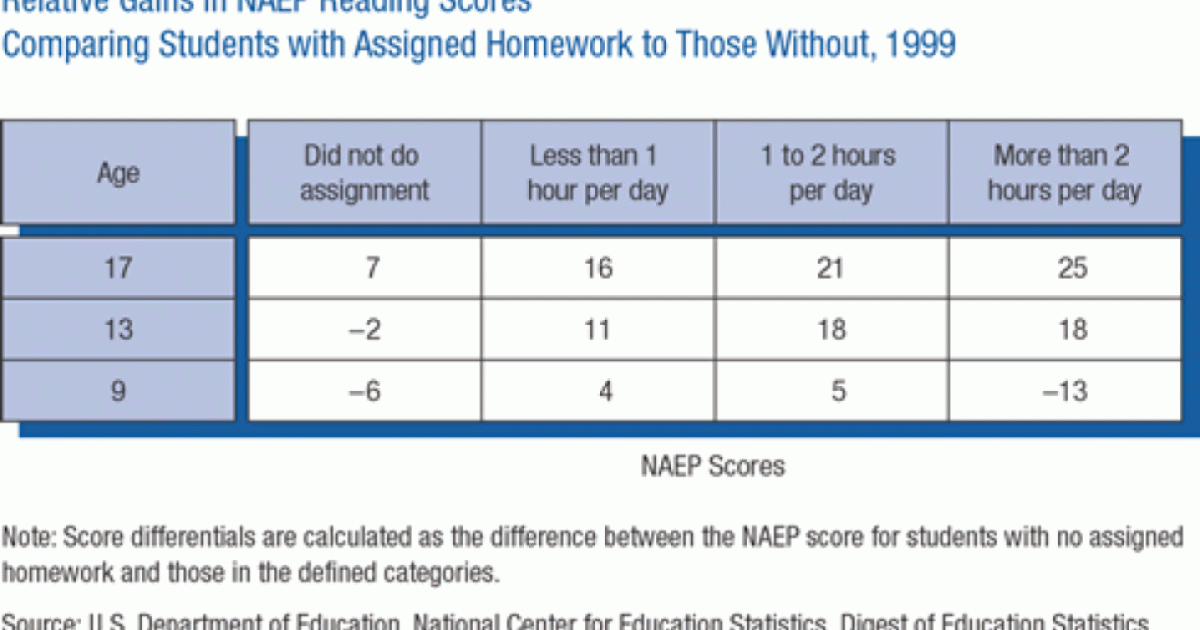In 1983, the nationally commissioned report A Nation at Risk recommended that homework requirements be increased to improve student achievement. Today, however, experts disagree on the value of homework. Some feel that too much homework can create excessive amounts of stress and allow for too little free time. Others feel that this is an area where schools, teachers, and parents have become too lax. Interestingly, the amount of homework the average American 10th grader is assigned has not changed dramatically over time. In 1982, it was just under one hour per day; in 2000, the amount was just a few minutes less.
The purpose of homework is to develop intellectual discipline, establish good study habits, balance classroom workload, supplement and reinforce material covered in class, and serve as a link between home and school. Homework may also be used to close achievement gaps between students. For example, of 50 independent studies, 43 (86 percent) indicated that students who did more homework had better test scores or earned higher grades.
Although the amount of time spent on homework is easily measured, using time as the only barometer for success can be deceptive. An exhaustive analysis of numerous studies regarding homework provided by the School Improvement Research series concluded that homework is most effective when it is
• Relevant to learning objectives
• Appropriate to students’ learning ability and maturity
• Assigned regularly
• Collected, corrected, and reviewed in class
• Assigned in reasonable amounts
• Well explained
• Supported by parents
The series also compared students who were given homework to those who were not, with 14 of 20 studies showing effects favoring homework.
The effects are more dramatic as students move through school (see figure 1). For nine-year-olds, the differences in average test scores of those who receive homework and those who do not are marginal. Interestingly, for those who report doing more than two hours of homework a day,
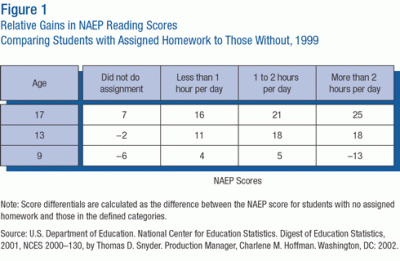
their performance lags behind that of those who do no homework. For high school students, however, there is a clear increase in performance for those assigned and completing homework relative to those who have no homework.
The majority of high school students are assigned homework, and the vast majority of them complete it. The standardized test scores provide evidence of homework’s effectiveness (see figure 2).
Other studies have shown that, more than seven out of ten times, high school students with assigned homework outperformed their peers who did not receive assigned homework.
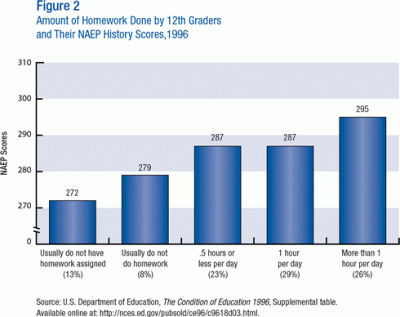
In junior high school, the difference was only three or four times out of ten; for elementary school children, there was no discernible difference.
Many factors contribute to the quality and effectiveness of homework, including a commitment by the teacher, parent, and student. Although the older the student, the greater the impact, what cannot be measured is the effect homework has on formulating good study habits, academic discipline, and basic preparation for later years. Homework for elementary students may not produce higher test scores, but it may lay the foundation for future success.








